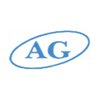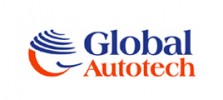Filter interviews by
Bando India Executive Accountant Interview Questions and Answers
Bando India Executive Accountant Interview Experiences
1 interview found
I applied via Recruitment Consultant and was interviewed in Nov 2020. There were 3 interview rounds.
Interview Questionnaire
6 Questions
- Q1. Please explain any special Asset & Liabilities that you have observed in your experience
- Q2. TDS percentage for Royalty, Sections and threshold limit
- Ans.
TDS percentage and threshold limit for Royalty and Sections
TDS rate for royalty is 10% if the recipient is a resident individual or HUF and 15% for others
TDS rate for sections like 194C, 194H, 194J is 1% for individual/HUF and 2% for others
Threshold limit for TDS on royalty is Rs. 40,000 and for sections is Rs. 30,000
Section 194M introduced in Budget 2019 requires TDS at 5% on payments made to resident contractors and ...
- Q3. Journal entry for Depreciation
- Ans.
Journal entry for Depreciation
Depreciation is the allocation of the cost of an asset over its useful life
It is recorded as an expense in the income statement and reduces the value of the asset on the balance sheet
The journal entry for depreciation involves debiting the depreciation expense account and crediting the accumulated depreciation account
For example, if a company's computer equipment has a useful life of 5 yea...
- Q4. E way bill Threshold limit
- Q5. What is ITC 4, Due date for filing
- Ans.
ITC 4 is a form used for claiming input tax credit on capital goods. Due date for filing is 20th of the following month.
ITC 4 is used for claiming input tax credit on capital goods
Due date for filing is 20th of the following month
It is filed by registered taxpayers under GST
Late filing can result in penalties and interest charges
- Q6. Journal entry of prepaid expenses, Is prepaid entry asset or Liability, If the prepaid is asset how it will be an asset
Interview Preparation Tips
Top trending discussions






Interview questions from similar companies

I applied via Recruitment Consulltant and was interviewed before Oct 2021. There were 3 interview rounds.

(1 Question)
- Q1. Documents OEE , rejection handling , cnc vmc machine handling,
(1 Question)
- Q1. General and basics questions
Interview Preparation Tips

Production Engineer Interview Questions & Answers
Toyoda Gosei Mindaposted on 3 Apr 2024
(1 Question)
- Q1. 7QC tools, 5'S, OEE formula, 4M change management, analysis,

What is your role in the company, and how did you achieve your target?

I appeared for an interview in Sep 2024.
(5 Questions)
- Q1. What were your job responsibilities in your previous position?
- Ans.
In my previous role as a Production Engineer, I managed production processes, optimized workflows, and ensured quality standards.
Oversaw daily production operations, ensuring efficiency and adherence to schedules.
Implemented process improvements that reduced production time by 15%.
Collaborated with cross-functional teams to troubleshoot and resolve production issues.
Conducted regular quality control inspections to main...
- Q2. How many personnel did you manage?
- Ans.
I managed a team of 10 personnel, overseeing their daily tasks and ensuring project goals were met efficiently.
Led a team of 10 engineers in a manufacturing project, coordinating schedules and tasks.
Implemented training programs for new hires, improving team productivity by 15%.
Conducted regular performance reviews, providing feedback and setting goals for team members.
Facilitated communication between departments to s
- Q3. What is the purpose of a " Why Why" analysis?
- Ans.
A 'Why Why' analysis identifies root causes of problems by repeatedly asking 'why' to uncover underlying issues.
Helps in identifying the root cause of a problem rather than just addressing symptoms.
Involves asking 'why' multiple times (typically five) to drill down to the core issue.
Example: If a machine breaks down, asking 'why' could lead to discovering inadequate maintenance practices.
Encourages a systematic approac...
- Q4. What are the implications of the 5S methodology?
- Ans.
5S methodology enhances workplace efficiency through organization, cleanliness, and standardization.
Sort (Seiri): Remove unnecessary items from the workspace. Example: Discarding outdated tools.
Set in Order (Seiton): Organize tools and materials for easy access. Example: Labeling storage areas.
Shine (Seiso): Clean the workspace regularly to maintain a safe environment. Example: Daily cleaning schedules.
Standardize (Sei...
- Q5. What products did you assemble during your experience?
(2 Questions)
- Q1. What kaizen initiatives have you implemented to reduce time?
- Ans.
Implemented kaizen initiatives to streamline processes, reduce waste, and enhance efficiency in production workflows.
Conducted time-motion studies to identify bottlenecks in the assembly line, leading to a 15% reduction in cycle time.
Introduced standardized work procedures that minimized variability and improved training efficiency for new employees.
Implemented a visual management system using Kanban boards to track wo...
- Q2. Are you familiar with the concept of the eight types of waste in lean manufacturing?
- Ans.
The eight types of waste in lean manufacturing focus on eliminating inefficiencies to enhance productivity and value.
1. Overproduction: Producing more than needed, e.g., making 100 units when only 50 are required.
2. Waiting: Idle time when resources are not being utilized, e.g., workers waiting for materials.
3. Transport: Unnecessary movement of products, e.g., moving items across the facility multiple times.
4. Extra P...
(2 Questions)
- Q1. Are you willing to relocate to Neemrana?
- Ans.
Yes, I am open to relocating to Neemrana for the opportunity to grow and contribute as a Production Engineer.
Relocating to Neemrana aligns with my career goals and aspirations.
I am excited about the potential to work in a new environment and learn from different challenges.
I have previously relocated for work, such as moving to a different city for an internship, which helped me adapt quickly.
I believe that working in ...
- Q2. What are your salary expectations?
Interview Preparation Tips

I applied via Naukri.com and was interviewed in Dec 2021. There were 3 interview rounds.
Interview Questionnaire
3 Questions
- Q1. Just go through your job responsibilities,as it is Japanese firm so don't forget to know Japanese terms such as - 5's,KAIZEN,POKA-YOKE etc
- Q2. Root cause analysis techniques/methods, situation based questions as- how will.u react as u get to know there is line rejection.....
- Q3. Kaizen example, and they are very serious about workplace safety.... So POKE YOKE and it's principles are must...
Interview Preparation Tips
Hope this will help u.
Good luck for interview..

(1 Question)
- Q1. What is the production
- Ans.
Production is the process of creating goods or services using resources such as labor, machinery, and materials.
Production involves converting raw materials into finished products
It includes activities such as manufacturing, assembling, and packaging
Efficient production processes can lead to cost savings and increased output

I appeared for an interview in Aug 2024.
English, maths and puzzles basic preparation.
Question
Add four work before work,guard to make meaningful word
Interview Preparation Tips

Production Engineer Interview Questions & Answers
Toyoda Gosei Mindaposted on 18 Aug 2023
I applied via Naukri.com and was interviewed before Aug 2022. There were 3 interview rounds.

(1 Question)
- Q1. Which parameters not affects the quality of casting but can reduce the CT ?
- Ans.
Parameters like mold temperature, pouring temperature, and cooling rate can reduce the casting cycle time without affecting quality.
Mold temperature
Pouring temperature
Cooling rate
(1 Question)
- Q1. What is the reason of resigning from your current company?
- Ans. For both personal and professional growth.

I appeared for an interview in Aug 2023.
(2 Questions)
- Q1. Why are you change job ?
- Q2. What is your notice period?
(5 Questions)
- Q1. What is your KPI
- Ans.
My KPI as a Production Engineer is to ensure efficient production processes, minimize downtime, and optimize product quality.
Monitoring and improving production efficiency
Reducing downtime through preventive maintenance
Implementing quality control measures
Optimizing production output
Analyzing and improving production costs
- Q2. How to calculate OEE
- Ans.
OEE (Overall Equipment Efficiency) can be calculated by multiplying Availability, Performance, and Quality percentages.
Calculate Availability by dividing the total operating time by the planned production time.
Calculate Performance by dividing the actual production rate by the maximum production rate.
Calculate Quality by dividing the good units produced by the total units produced.
Multiply the Availability, Performance
- Q3. What is 4M and what is retroactive & prospective
- Ans.
4M is a methodology used in production engineering. Retroactive refers to actions taken after an event, while prospective refers to actions taken before an event.
4M is a methodology used in production engineering that stands for Man, Machine, Material, and Method.
Man refers to the human resources involved in the production process.
Machine refers to the equipment and tools used in production.
Material refers to the raw m...
- Q4. What is base documents of control plan
- Ans.
The base documents of a control plan include process flow diagrams, work instructions, and quality standards.
Process flow diagrams outline the sequence of steps in the production process.
Work instructions provide detailed instructions on how to perform each step of the process.
Quality standards define the criteria for acceptable quality and specify the required inspections and tests.
Other base documents may include con...
- Q5. What is 5W 1H
- Ans.
5W 1H is a technique used to gather information by asking five 'W' questions and one 'H' question.
5W 1H stands for Who, What, When, Where, Why, and How.
It is commonly used in journalism, problem-solving, and project management.
By asking these questions, one can gather comprehensive information about a situation or problem.
For example, in a production engineering context, the 5W 1H questions could be: Who is responsible...
Bando India Interview FAQs
Tell us how to improve this page.
Interview Questions from Similar Companies
Bando India Executive Accountant Reviews and Ratings
based on 6 reviews
Rating in categories
|
Production Engineer
38
salaries
| ₹2.5 L/yr - ₹5.6 L/yr |
|
Senior Engineer
22
salaries
| ₹4.7 L/yr - ₹7.5 L/yr |
|
Manufacturing Engineer
19
salaries
| ₹2.9 L/yr - ₹4.7 L/yr |
|
Senior Production Engineer
19
salaries
| ₹5 L/yr - ₹7.2 L/yr |
|
Executive Accountant
19
salaries
| ₹2.2 L/yr - ₹3.6 L/yr |

Ag Industries

Toyoda Gosei Minda

Ralson Tyres Limited

Global Autotech
- Home >
- Interviews >
- Bando India Interview Questions >
- Bando India Executive Accountant Interview Questions










